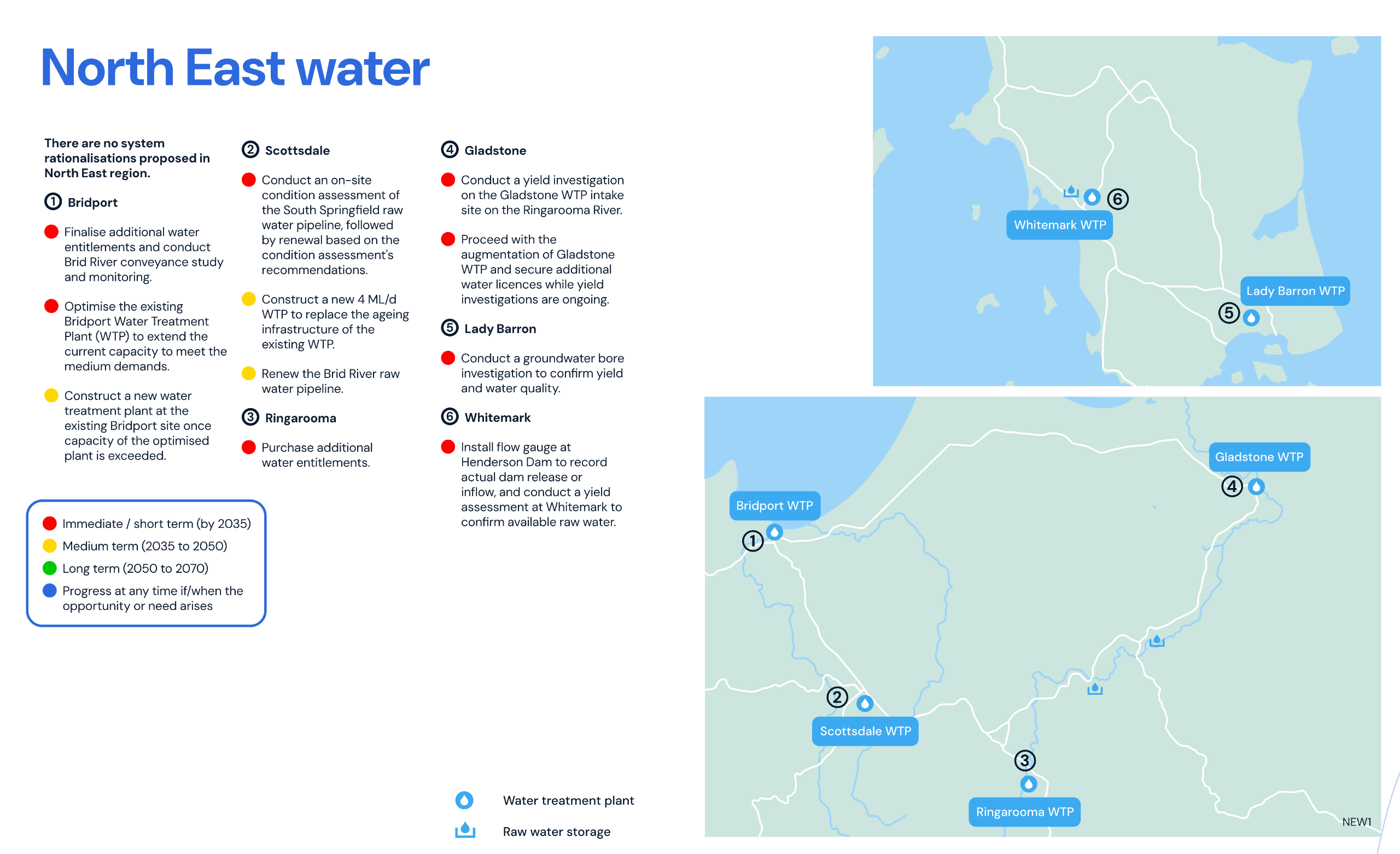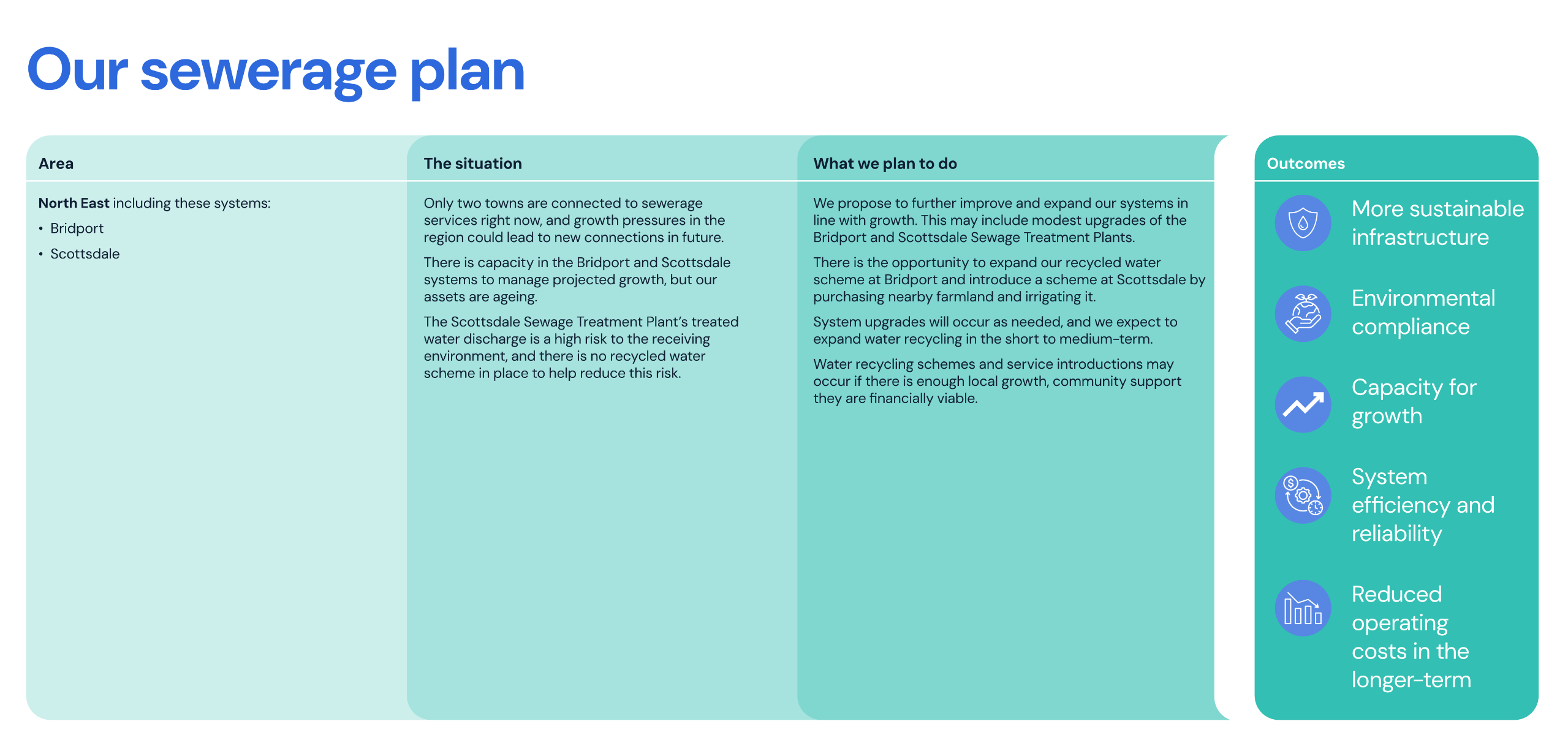Current services
The region has six water and two sewerage systems as well as a recycled water scheme to support the region’s residents, businesses and farms.
Much of the region’s water and sewerage infrastructure began as part of small, localised systems that were once fit for purpose. However, over time there has been underinvestment in our infrastructure as well as changing community expectations about how we manage growth and operate sustainably.









